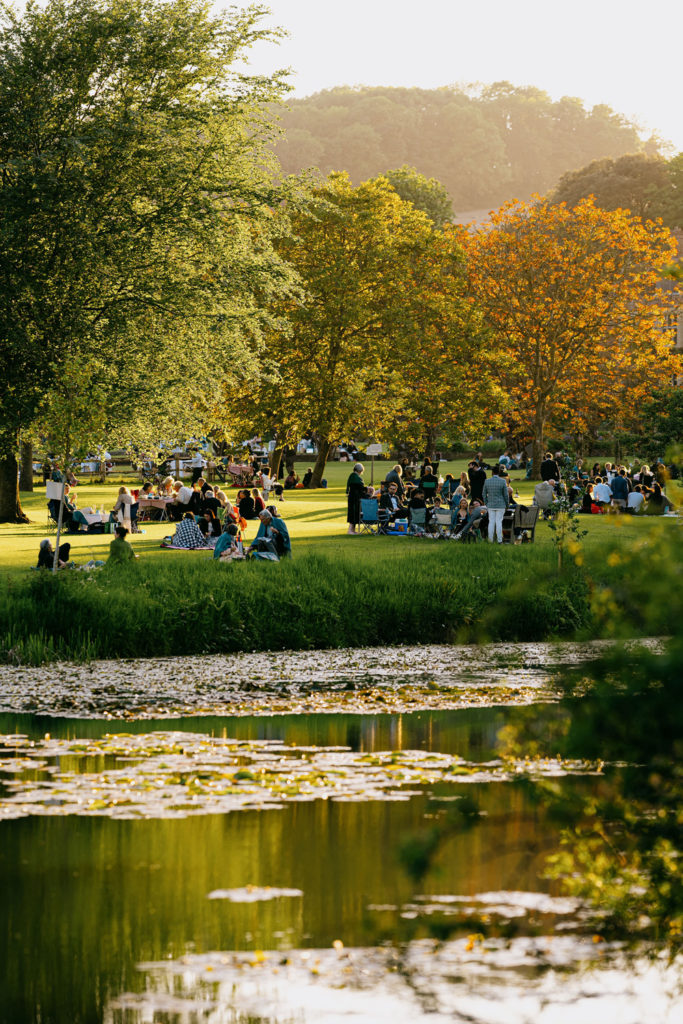How to Drink Tea: A Very British Guide
By
1 year ago
There’s nothing more British than a cup of tea. But are you doing it right?

An American scientist has sparked outrage for suggesting we should be adding salt to our tea, so much so that the embassy had to issue a statement confirming this wasn’t ‘official United States policy’. So how do you make the perfect cuppa? From the social rules and etiquette surrounding the British traditions of tea, to the differences between supermarket and luxury brands, we give you a complete run-down to the nation’s favourite drink. We tell you: how to drink tea.
A History of Tea
Tea arrived on our shores from China in the 17th century. As a rare and exotic new drink, only the Queen and the aristocracy could afford to drink it.
‘As a new oriental luxury, the ceremony of brewing and serving was copied from the Chinese. The lady of the house took charge of the kettle and teapot and served the tea in tiny porcelain bowls. At Ham House, Surrey, the Duchess of Lauderdale is thought to have served tea to her friend Queen Catherine in this way, in the white and silver teapot still on show at the house.’ – National Trust History of Tea
Throughout the 18th century, different grades of tea became widely available. The tradition of taking a ‘tea break’ was introduced to many workplaces across the country. The 19th century saw the popularity of tea growing even faster, with tea rooms popping up across Britain to serve the masses.
When to Drink Tea
You might think that tea is to be served roughly every 30 minutes with a dash of milk and a rich tea. But we consulted the tea experts to see when tea is best enjoyed…
MORNING: The stronger, single-origin black teas from Assam, Ceylon, and China, as well as English and Irish breakfast blends, can help make greeting the day a little easier. These are sometimes best with a splash of cream or milk.
LUNCH/EARLY AFTERNOON: Try mellower green teas (sencha, jasmine, matcha, Mao Feng) and oolong teas (Ali Shan, Bai Hao), which better suit the pace of a day already in gear.
DINNER/EARLY EVENING: Oolongs, whites (Silver Needle, White Peony), and decaffeinated tea go well with dinner. For heartier meals, pu-erh is a tea of choice (it is reputed to help cut cholesterol and the bloat of fatty foods). White tea (served with fruit), or a limited edition, first flush tea (spring harvest) can dress up a fancier meal occasion.
BEDTIME: Most people look for something with no caffeine at the end of the waking day. Herbal or fruit teas are caffeine-free and provide a soothing alternative.
Extract from How to Make Tea: The Science Behind the Leaf by Brian R Keating & Kim Long. Published by Ivy Press.
Loose Leaf Vs Bagged Tea
This is such a complex (and fiercely contentious issue) that we’ve done a separate feature on the differences between loose leaf and bagged teas.
However, Florence Holzapfel, Tea and Coffee buyer at Fortnum & Mason told us: ‘The biggest difference is that they contain different grades of tea. The tea grades commonly used in tea bags are from a different processing method known as ‘Cut, Tear and Curl’. CTC creates fine leaf tea with a larger surface area which means it brews faster, but loses some of its flavour. Loose leaf, by contrast, preserves all the richness and complexity of the tea.’
How to Drink Tea
Now we come to the important bit: how do you drink tea?
Bernadine Tay is a certified tea sommelier and global tea curator for Wedgwood. She told us: ‘The exciting thing about tea is there are so many ways to enjoy it. Hot, cold brewed, or infused in a tea cocktail. Not only is tea a healthy beverage, but its interesting flavour profile means that it can be enjoyed in so many ways.’
Water Temperature
‘The important thing is to know a little about the type of tea you are preparing to serve, and to know the best way for your guest to experience it. For example, if you were serving hot tea, the general rule is to know that only black and herbal teas can withstand boiling water. Any other teas such as green, oolong and white teas need a cooler water so the leaves do not burn, which can produce a bitter flavour. Green or white tea are typically drunk without milk or sugar, as they have a much more delicate aroma and flavour.’ – Bernadine Tay
Iced tea is best brewed overnight in the fridge in cold water to allow for a delicate, naturally sweet tea.
English Breakfast Tea
How do you make the perfect cup of English breakfast tea? We’ll let the experts explain…
- First and foremost, always use freshly-drawn water; if you reboil old water, it’ll lose oxygen and that will affect the taste of your tea.
- Where possible I would also recommend using loose leaf tea, as it’s the best way to experience the tea’s full breadth of flavour.
- The perfect cup is one that’s poured from a tea pot too – you should use one heaped teaspoon per person around the table, and add an extra one just for the pot.
- The temperature of your water also matters – breakfast tea is a black tea, so boiling water is a must.
- Finally, brew for 3-5 minutes (I brew for the full five, for a stronger flavour) and then add milk – first or last, either is grand – and if you like, a dash of sugar too.
Florence Holzapfel, Fortnum & Mason
- A proper cup of tea calls for loose leaf tea. Use a specialist blend – our version Blight-tea, is our best-seller.
- Take a fine bone china teapot and add one level dessert spoon of tea leaves for a small pot for one, two for a large pot.
- Pour boiling water, leave to infuse for three to four minutes before pouring into a china cup with a saucer.
- Contrary to wide belief, there is no real effect to adding the milk before or after so we always ask for personal preference.
Nancy Clack, Owner of Nancy’s Teashop
Tea: The Social Rules
‘Tea should be taken when and wherever you like, and in whatever fashion best suits you,’ says Fortnum & Mason’s Florence Holzapfel. ‘There are better and worse ways to make tea and more formal and informal ways to enjoy it. But rules are there to be broken and tea is made to be enjoyed. The only thing I am slightly militant about is the cup or the mug I use. You wouldn’t drink fine wine from a pint glass, and I think the same applies to fine tea.’
Featured image: Priscilla du Preez via Unsplash









